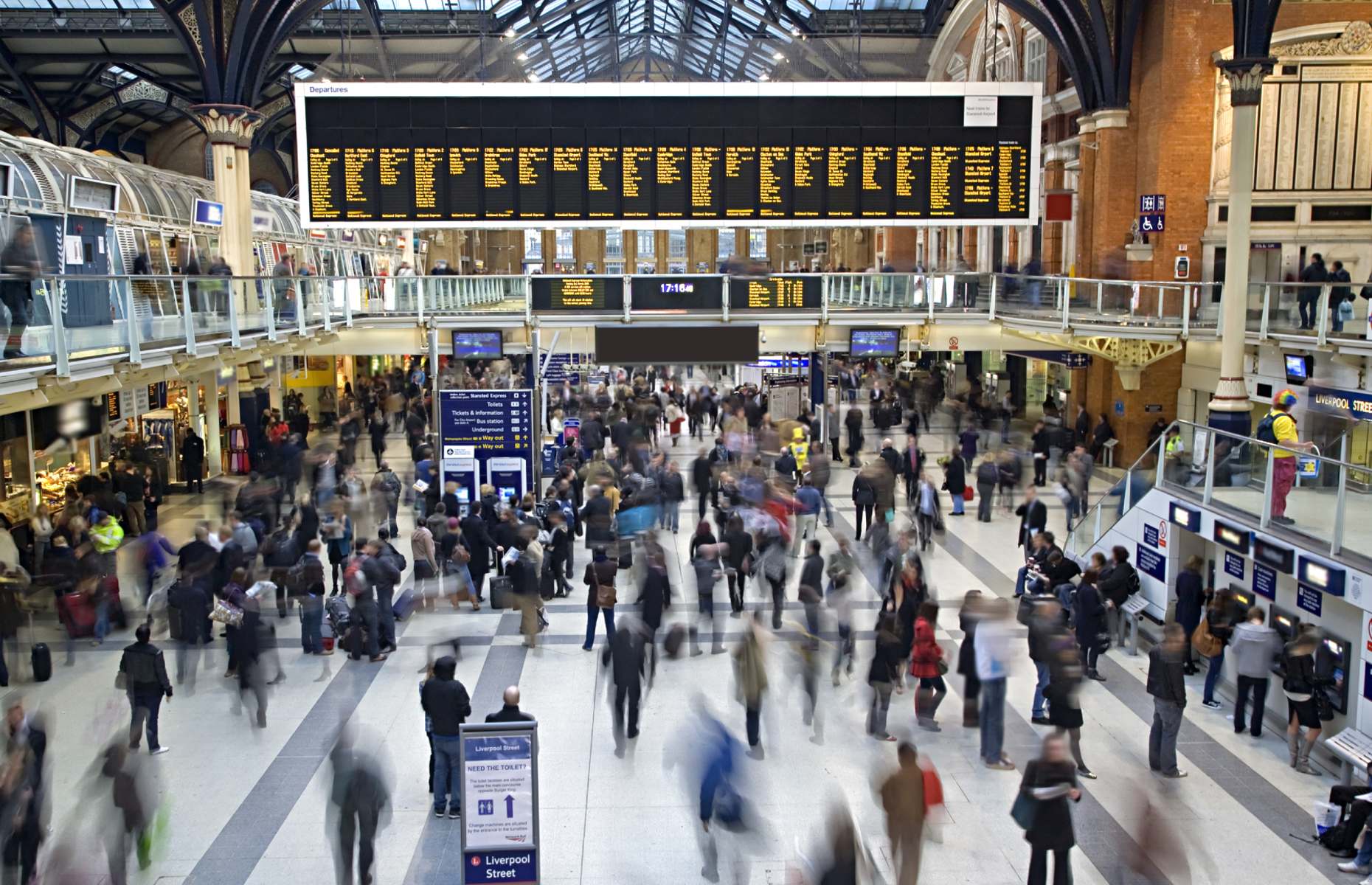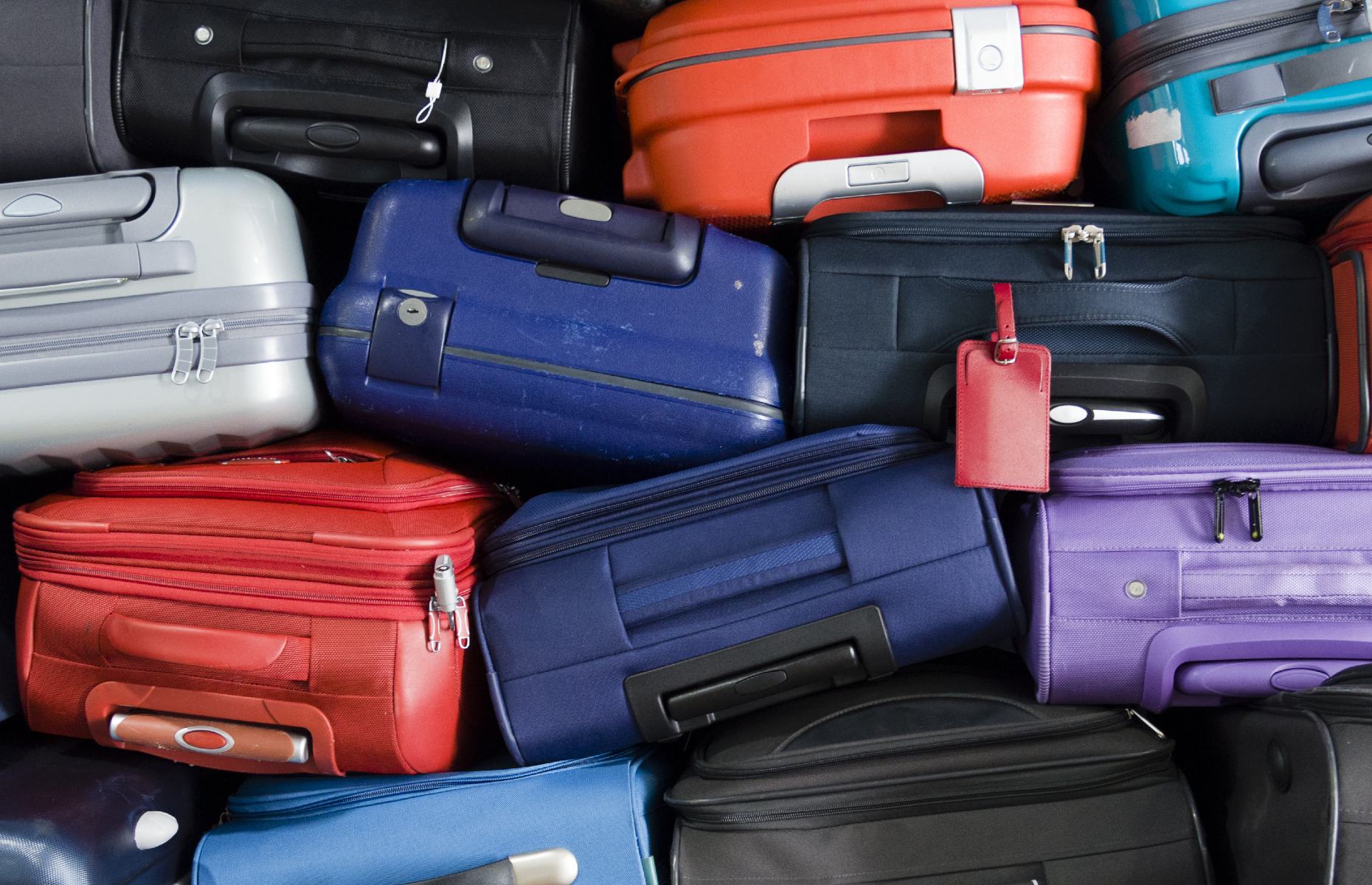11 top money-saving tips for rail travellers this year

With the cost of train tickets skyrocketing, finance experts, industry professionals and savvy rail travellers share their best hacks for getting back on the tracks while saving precious cash.
On 5 March, the cost of train fares in England and Wales rose on average by 5.9% — the most significant price hike in more than a decade. With fares increasing elsewhere in Europe and the cost-of-living crisis pinching pennies both at home and away, we tapped a number of money-saving maestros for their niftiest tricks when it comes to spending less as a rail traveller in 2023.
1. Timing is everything
It pays to be prepared as a rail traveller, with advance tickets commanding much lower fees than those purchased closer to your journey. According to Euronews, the UK is the most expensive country in Europe when it comes to buying single tickets on the day of a journey. But Nick Drewe, trends expert at Wethrift, says advance tickets are usually the cheapest, typically released around 12 weeks ahead of the train’s departure date and saving customers as much as 80% (as per Rail Easy) if they book early enough. Trainline, along with the booking engines for service providers like CrossCountry and Avanti West Coast, allow you to set up alerts that notify you of advance ticket availability.
Avoid travelling during morning and evening rush hours to cut your ticket cost further. There are off-peak and sometimes even super off-peak fares available with most rail operators, offering tickets at reduced prices to those travelling during quieter periods. Taking a slower route can also be a more affordable option.
 Keith Gentry/Shutterstock
Keith Gentry/Shutterstock
READ MORE: 10 ways to reduce the carbon footprint of your next holiday
2. Consider split ticketing
Finding split-fare tickets can reap big rewards. Split-ticketing is when you buy multiple separate tickets to cover different legs of your trip, instead of buying just one ticket for a whole journey. So, for instance, if you’re travelling from Bristol to Birmingham, you would buy separate tickets from Bristol to Cheltenham Spa and Cheltenham Spa to Birmingham, rather than one ticket between the two stations. But don’t worry, it doesn’t mean you have to change trains.
Savings solutions provider Ocean Finance recommends using a site like Split My Fare, where rail travellers can save up to 90% on their tickets using this method. The Trainline app also has a Split Save function that can help you search for the best-value split tickets. Alternatively, buying two single tickets instead of a return can often yield decent savings. Most booking platforms will flag the cheaper option when you’re using their journey planner.
3. Invest in a season ticket
Whether you travel often on trains for business or pleasure, season tickets can work out around a third cheaper than buying daily tickets. According to National Rail, a weekly pass will likely save you money if you make the same journey on three or more days a week, whereas a monthly saver option can help cut costs significantly for those travelling every weekday. There’s also the Flexi Season ticket, offering eight days of unlimited travel between two designated stations within a 28-day period.
Though season tickets carry substantial upfront costs, they are worth it in the long run for frequent rail users. Check out the season ticket calculators on Trainline or National Rail to weigh up how much a weekly, monthly or annual season ticket could save you on your regular route.
 Natee Meepian/Shutterstock
Natee Meepian/Shutterstock
Love this? Follow us on Facebook for more travel tips and inspiration
4. Get a railcard
There are several types of railcard available in the UK, costing £30 ($37) for a year with guaranteed discounts of up to a third off anytime and off-peak fares, so you'll soon recoup what you spent within just a few journeys. The 16-25 railcard is one of the most popular, and young people can save themselves a further £20 ($25) on the price of three separate annual railcards when they buy a three-year card for £70 ($86). Those purchasing senior railcards, veterans’ or Family and Friends railcards can also benefit from this three-year deal.
From the so-called "millennial railcard" for 26 to 30 year-olds to the Two Together railcard, which you can sign up for with someone you regularly travel with, there's plenty of ways to save. And if you're travelling through London, Laura Turner of Thrifty Londoner has a great insider tip for you: add your railcard to your Oyster card account (Transport for London's contactless pay-as-you-go travelcard) to save a third on off-peak Tube travel.
It also pays to research what other discounts you could be eligible for as a rail traveller. Those claiming Jobseeker's Allowance or Universal Credit, for instance, may be entitled to a JobCentre Plus Travel Discount Card, giving you 50% off train fares.
 4 PM production/Shutterstock
4 PM production/Shutterstock
5. Be savvy about where and how you buy tickets
There are all sorts of sneaky hidden costs involved when booking rail journeys, unless you know how to shop smarter. Booking direct with individual train operators can help dodge those pesky booking fees – and there are often other incentives too. With Virgin Trains Ticketing, for example, you can buy e-tickets with zero booking fees while collecting Virgin Red rewards points, which can be redeemed against everything from free Greggs sausage rolls to scented candles and wine. Southeastern Railway, LNER (London North Eastern Railway) and Avanti West Coast all have their own rewards schemes too which, even if they don't include savings on tickets themselves, can add up to discounts on hotels, food and your phone bill.
But there are also specific apps designed to find the best train routes at the very best prices, such as Seatfrog. Without charging booking fees, Seatfrog's aim is to give all passengers the chance to get "the best journey for their money", allowing them to bid on empty first-class seats and score bargain upgrades, as well as being able to buy tickets and swap their trains. Since it launched in 2018, Seatfrog claims to have saved Brits over £43million ($53million) on rail travel.
It's always worth looking out for offers and new deals, which pop up all the time. Avanti West Coast is currently trialling a limited 'Superfare' programme, where passengers can purchase £20 ($25) tickets from Manchester to London provided you can be flexible about when you travel. The initiative works by matching customers to empty seats on key services when you select morning, afternoon or evening departure on your choice of travel day. You'll have to book one to three weeks ahead of your desired date of travel and your exact departure time is only revealed the day before, so it's handy if you don't mind your travel plans coming together until the last minute.
 Robi Jaffrey/Shutterstock
Robi Jaffrey/Shutterstock
READ MORE: The UK’s most charming rail journeys
6. Make the most of cashback programmes
Personal finance blogger SimiShares swears by this little-known tip: Cashback programmes will give you a small amount of money back whenever you make a purchase, and popular sites like TopCashback and Quidco can help save rail travellers a few pounds when they make bookings through Trainline.
Halifax Bank also offers 5% cashback to account holders when booking with LNER, while cashback credit cards are another potential option; MoneySavingExpert recommends setting up a monthly direct debit to repay the card fully and avoid paying interest, which could end up negating any cashback savings you pocket.
7. Take the sleeper train
For true rail buffs, taking an overnight train is something of a rite of passage. And while there aren't too many to speak of in the UK (just the Night Riviera from London to Penzance and London to Inverness on the Caledonian Sleeper), they can help you save money on accommodation and maximise exploring time wherever you go. Whether it's the Nightjet from Germany to Croatia, the Reunification Express in Vietnam or the Ghan in Australia's Red Centre, sleeper train journeys make for epic experiences in themselves.
As Anita Naik, savings expert at VoucherCodes.co.uk, points out, sleeper services are typically more expensive than travelling during the day, but they are unique in their benefits, allowing you to discount a night's accommodation from your overall travel spend and get from A to B while you're resting.
 evantravels/Shutterstock
evantravels/Shutterstock
READ MORE: The world’s best sleeper train routes
8. Support budget rail operators
Lumo, dubbed the easyJet of railways, could spark a new movement of budget rail travel. It operates a fully-electric London Kings Cross to Edinburgh service rivalling that offered by LNER, but at a fraction of the cost. According to online savings platform Raisin UK, LumoFixed fares start at £19.90 ($24), undercutting LNER's £31.80 ($39) standard-class tickets by more than a third. The catch is that, currently, Lumo doesn't stop at every station on the line and only offers four daily journeys (compared with LNER's half-hourly service), though this is set to increase to 10 over the course of the year to meet demand.
9. Take your mates and spend less
That next weekend away with your pals just got cheaper. With Group Save, parties of three to nine adults travelling and booking together can save up to a third on off-peak rail tickets. Recommended by Lucinda O'Brien, expert at Money.co.uk Savings, this easy fix saves both pennies and faff; there's no scrambling for everyone in the group to organise their own tickets – it's all taken care of in a few clicks. It's especially useful for those who don't already benefit from railcard discounts, as these can't be applied on top of the Group Save.
 Lucia Romero/Shutterstock
Lucia Romero/Shutterstock
READ MORE: 2023’s affordable eco-conscious travel destinations
10. Travelling through Europe?
Rail travel in the European mainland is largely much more budget-friendly than the UK, with the ever-popular Interrail/Eurail pass facilitating rail travel across 33 different countries and saving passengers potentially thousands than if they were buying individual point-to-point tickets.
Travel writer and seasoned rider of the rails Julia Hammond has another top tip to help you navigate train travel in Europe: Sparschiene tickets. These are limited-availability advance fares offered by ÖBB through their app. For a trip from Vienna to Budapest later this year, Julia was able to bag a ticket for less than €15 (£13/$16), compared to the standard fare of €50.70 (£45/$55).
Beginning on 1 May, Germany will introduce the Deutschlandticket for €49 (£43/$52), which permits passengers a month's worth of travel on the country's regional train and bus network. Along with France, Germany has also released thousands of free train tickets for under 27s. In Spain, free multi-journey travel on commuter and medium-distance Renfe trains is being offered until the end of the year, regardless of whether you're a resident or a tourist.
In a recently announced initiative, the EU will also be giving away 35,000 free rail passes in 2023 to 18 year-olds from across the European Union and other countries that participate in the Erasmus study abroad programme. You have until midday CEST on 29 March to apply, with full details available here.
 Geza Kurka_Hungary/Shutterstock
Geza Kurka_Hungary/Shutterstock
11. Travelling with luggage?
Giacomo Piva is a travel industry analyst and co-founder of Radical Storage, who says storing your bags at a Radical Storage resource can cost as little as £5 ($6) a day per luggage item. This vastly undercuts the extortionate fees charged by a lot of left-luggage facilities at train stations, which can be around £15 to £25 ($18 to $31) per bag. Radical Storage also offers a free audio guide of the destination you’re in, which includes everywhere from Buenos Aires and Tokyo to Yerevan and Nairobi. For rail passengers throughout Europe, Stow Your Bags is another low-cost alternative, which charges by storage locker size and has outposts in Paris, Barcelona, Milan and more.
 Maurizio Milanesio/Shutterstock
Maurizio Milanesio/Shutterstock
READ MORE: Beautiful train journeys around the world that won’t break the bank
Comments
Be the first to comment
Do you want to comment on this article? You need to be signed in for this feature